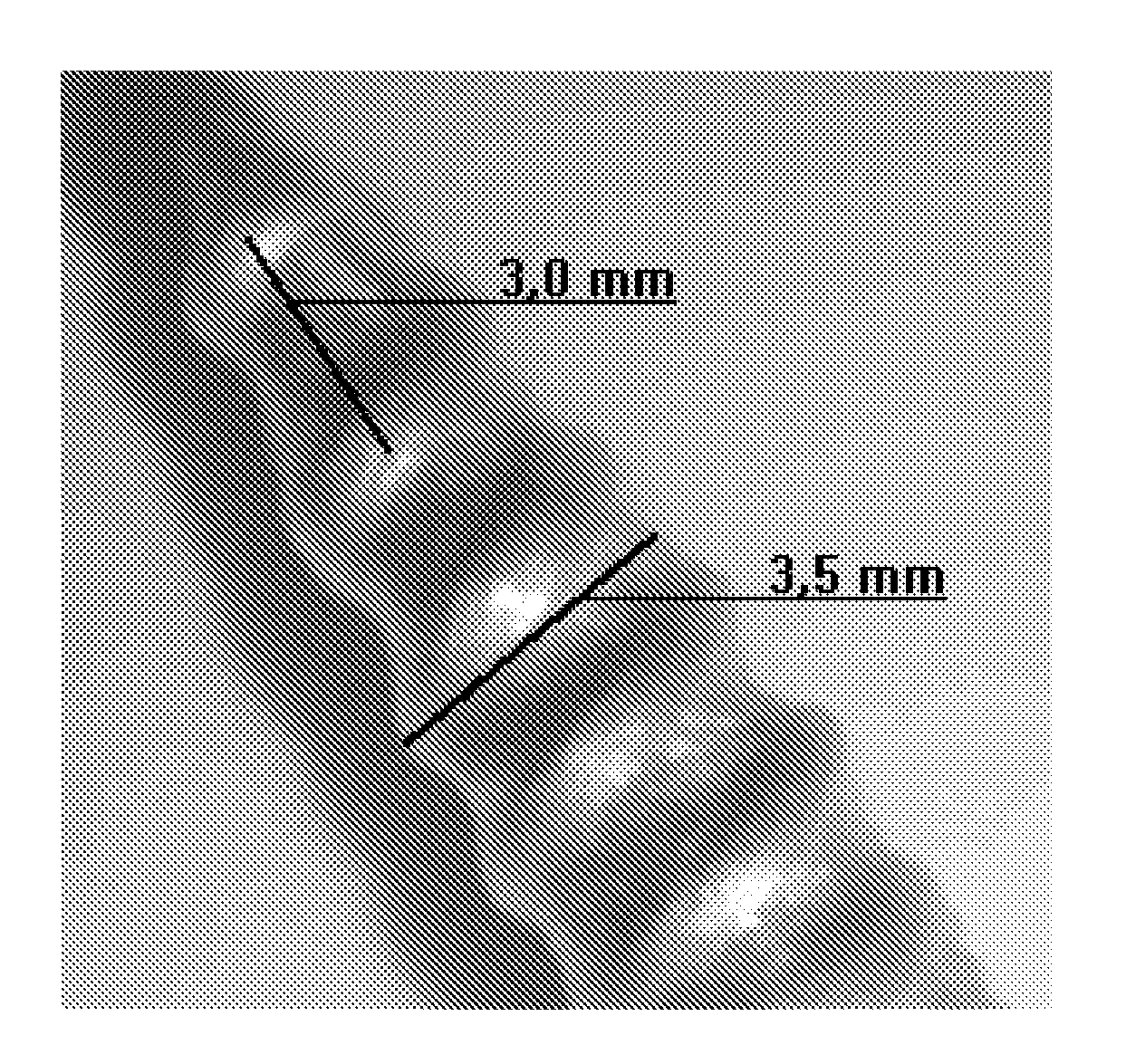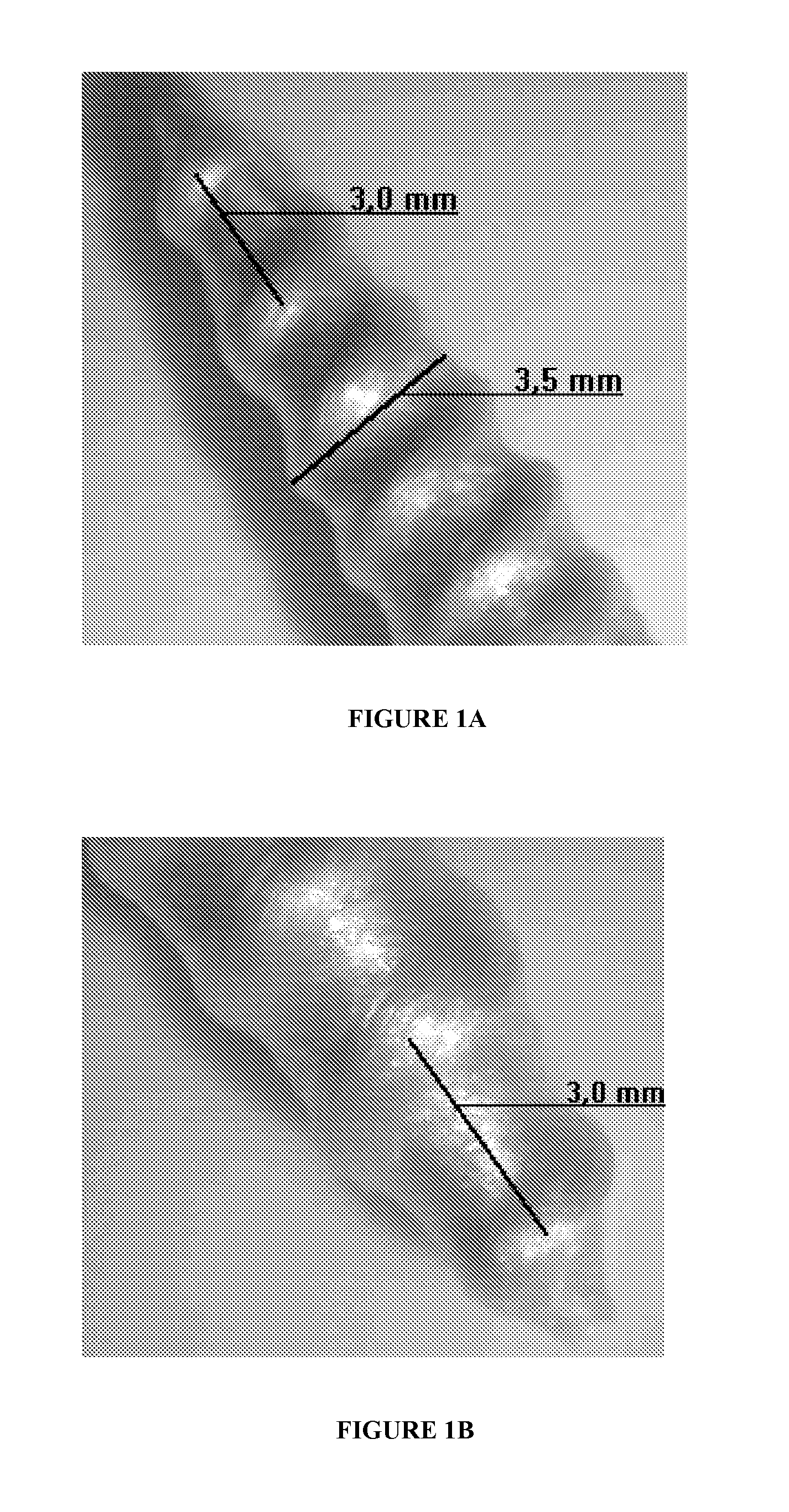Implantable Degradable Biopolymer Fiber Devices
a biopolymer fiber and degradable technology, applied in the direction of prosthesis, peptide/protein ingredients, drug compositions, etc., can solve the problems of unfavorable lowering of the ph value around the healing area, products induced by polyhydroxyacids, etc., to reduce the likelihood of secondary fracture, and eliminate the additional cost and potential complications
- Summary
- Abstract
- Description
- Claims
- Application Information
AI Technical Summary
Benefits of technology
Problems solved by technology
Method used
Image
Examples
example 1
[0080]An implantable fastening screw of the present invention was made as follows. Thin calcium alginate fibers were spun up and down around a mold, e.g. a thin needle, until the desired thickness was obtained. Some of the thin fibers were twisted, and spinning the twisted fibers upwards made threads. The resultant threaded screw was transferred to a solution of 50 mM citrate for 2-5 minutes to make the surface of the fibers somewhat soluble by sequestering calcium ions. Other sequestering agents such as EDTA may also be used. The screw was then kept in a solution of 50 mM calcium chloride with 1% glycerin for 2 to 5 minutes to make the screw stronger by gelling the fibers together. The screw was then dried in room temperature or in a drying oven. The mould was removed when the screw was dry.
[0081]Swelling studies were performed in a model physiological solution, consisting of 142 mM sodium ions and 2.5 mM calcium ions, for 24 hours. The screw's diameter did not increase, but the le...
example 2
[0082]A plug made of alginate fibers was made by winding a planar bundle of 1000 monofilaments once upwards and once downwards around a 1 mm diameter mold. After fabricating these two layers, the plug was dipped in a 10% (w / w) solution of a low molecular weight sodium alginate for 10 seconds. After withdrawal of the plug, excess alginate solution was removed, and three fiber bundles were attached in the longitudinal direction to increase tensile strength. This was followed by another upwards and downwards winding of fibers. The process of dipping in alginate solution, attachment of longitudinal fibers and another upwards and downwards winding of fibers was repeated twice. Then, the plug was dipped in a 3% (w / w) solution of a high molecular weight alginate for 10 seconds, and left for 2 minutes for excess alginate solution to rinse off. The plug was then submerged in a solution of 4.5% (w / w) CaCl2*2H2O and 10% glycerol for 5 minutes. The mold was removed, and the plug dried at room t...
example 3
[0085]This example describes how to make a bolt from cross-linked calcium alginate fiber with a dry alginate gel coating. The example further shows the strength measurement of a dry bolt and a bolt that is partly hydrated in a model physiological solution.
[0086]A bolt was made from alginate fibers by winding a bundle of 5000 high-G alginate monofilaments up and down tightly around a needle (diameter: 1 mm, length: 5 cm). The windings were repeated about three times in each direction until the diameter of the bolt was about 5.6 mm. Then the bolt was placed in a 3% aqueous alginate solution (PRONOVA UP LVG, 1% viscosity: 44 mPas, FG: ˜0.7) for 10 minutes. During this treatment it was seen that a gel layer was created around the bolt. This gel layer was created due to diffusion of calcium ions present in the fibers now available to gel the alginate solution surrounding the bolt. By this treatment the fibers on the surface of the bolt are partly dissolved and the bolt is coated with an ...
PUM
| Property | Measurement | Unit |
|---|---|---|
| molecular weight | aaaaa | aaaaa |
| molecular weight | aaaaa | aaaaa |
| pKa | aaaaa | aaaaa |
Abstract
Description
Claims
Application Information
 Login to View More
Login to View More - R&D
- Intellectual Property
- Life Sciences
- Materials
- Tech Scout
- Unparalleled Data Quality
- Higher Quality Content
- 60% Fewer Hallucinations
Browse by: Latest US Patents, China's latest patents, Technical Efficacy Thesaurus, Application Domain, Technology Topic, Popular Technical Reports.
© 2025 PatSnap. All rights reserved.Legal|Privacy policy|Modern Slavery Act Transparency Statement|Sitemap|About US| Contact US: help@patsnap.com


